Balkinization
an unanticipated consequence of
Jack M. Balkin
Balkinization Symposiums: A Continuing List
E-mail:
Jack Balkin:
jackbalkin at yahoo.com
Bruce Ackerman
bruce.ackerman at yale.edu
Ian Ayres
ian.ayres at yale.edu
Corey Brettschneider
corey_brettschneider at brown.edu
Mary Dudziak
mary.l.dudziak at emory.edu
Joey Fishkin
joey.fishkin at gmail.com
Heather Gerken heather.gerken at yale.edu
Abbe Gluck abbe.gluck at yale.edu
Mark Graber
mgraber at law.umaryland.edu
Stephen Griffin
sgriffin at tulane.edu
Jonathan Hafetz
jonathan.hafetz at shu.edu
Jeremy Kessler
jkessler at law.columbia.edu
Andrew Koppelman
akoppelman at law.northwestern.edu
Marty Lederman
msl46 at law.georgetown.edu
Sanford Levinson
slevinson at law.utexas.edu
David Luban
david.luban at gmail.com
Gerard Magliocca
gmaglioc at iupui.edu
Jason Mazzone
mazzonej at illinois.edu
Linda McClain
lmcclain at bu.edu
John Mikhail
mikhail at law.georgetown.edu
Frank Pasquale
pasquale.frank at gmail.com
Nate Persily
npersily at gmail.com
Michael Stokes Paulsen
michaelstokespaulsen at gmail.com
Deborah Pearlstein
dpearlst at yu.edu
Rick Pildes
rick.pildes at nyu.edu
David Pozen
dpozen at law.columbia.edu
Richard Primus
raprimus at umich.edu
K. Sabeel Rahmansabeel.rahman at brooklaw.edu
Alice Ristroph
alice.ristroph at shu.edu
Neil Siegel
siegel at law.duke.edu
David Super
david.super at law.georgetown.edu
Brian Tamanaha
btamanaha at wulaw.wustl.edu
Nelson Tebbe
nelson.tebbe at brooklaw.edu
Mark Tushnet
mtushnet at law.harvard.edu
Adam Winkler
winkler at ucla.edu
Compendium of posts on Hobby Lobby and related cases
The Anti-Torture Memos: Balkinization Posts on Torture, Interrogation, Detention, War Powers, and OLC
The Anti-Torture Memos (arranged by topic)
Recent Posts
Locating the absolute minimum level of policy “seriousness” our public sphere demands
Just A Few Blogs
ACS Blog
Alas, a Blog
Althouse
Arts and Letters Daily
Atrios (Eschaton)
Bill of Health
Buzzflash.com
Buzz Machine
Cato at Liberty
Juan Cole (Informed Comment)
Concurring Opinions
The Constitution in 2020
Corrente
Crooked Timber
Daily Howler
Daily Kos
Dana Boyd
Brad DeLong
Digby (Hullabaloo)
Discriminations
Daniel Drezner
Kevin Drum (Mother Jones)
Electrolite
En Banc
Eunomia (Daniel Larison)
Fafblog
Michael Froomkin (Discourse.net)
GovLab (Beth Noveck)
Rick Hasen (Election Law)
History News Network
How Appealing
Ignatz (Sam Heldman)
The Importance of (Ernie Miller)
Infolaw
Instapundit
International Economic Law and Policy Blog
IntLawGrrls
Jacob Levy
Jesus' General
Jurisdynamics
The Kitchen Cabinet
Mark Kleiman
Law Blog Central
Larry Lessig
Lawyers, Guns and Money
Liberal Oasis
Brian Leiter's Law School Reports
The Leiter Reports
Marginal Revolution
Megan McArdle
Memeorandum
Metafilter
Mirror of Justice
The New Republic
Newseum
No More Mister Nice Blog
Brendan Nyhan
Opinio Juris
Orcinus
The Originalism Blog
Pandagon
Passport (Foreign Policy)
Overcoming Bias
Political Animal (Washington Monthly)
Political Theory Daily Review
Political Wire (Taegan Goddard)
The Poor Man
Virginia Postrel
Prawfsblawg
Public Reason
Jonathan Rauch
Raw Story
Redstate
ReligiousLeftLaw.com
Reporters Committee For Freedom of the Press
Reproductive Rights Blog
Rothman's Roadmap to the Right of Publicity
SCOTUS Blog
Seeing the Forest
Clay Shirky
The Shifted Librarian
The Situationist
Larry Solum (Legal Theory)
Andrew Sullivan
Talking Points Memo
Talk Left
Tapped
Tbogg
TechPresident
The Paper Chase (Jurist)
Tom Paine
Tom Tomorrow (This Modern World)
Eve Tushnet
Uggabugga
University of Chicago Law School Faculty Blog
Unqualified Offerings
The Volokh Conspiracy
War and Piece (Laura Rozen)
Wampum
Oliver Willis
Wonkette
Written Description
Matthew Yglesias
Yin
Your Choice of Feeds
1. XML
powered by
2. Atom Feed
3. RSS 2.0
Locating the absolute minimum level of policy “seriousness” our public sphere demands
Joseph Fishkin
Polls close soon in today’s special congressional election in Montana. Last night, the Republican candidate Greg Gianforte reacted angrily to a Guardian reporter’s questions about the CBO score of the Republican health care bill by body-slamming the reporter to the ground and repeatedly punching him, according to eyewitnesses, one of whom was a reporter for Fox News, Alicia Acuna.
This put Acuna in an awkward position. She and her two crew members were the closest eyewitnesses to an extraordinary and extremely newsworthy event—but also one that would likely harm the prospects of the Republican candidate in a very high-profile special election. Thus, core norms of Acuna’s profession (tell the story, get the facts out, do it quickly and fairly) came into unusually sharp conflict with core norms of her employer (tell the pro-Republican side of the story, or else minimize the story). To her great credit, Acuna put out a statement last night that was straightforward and unequivocal. She stated that after Ben Jacobs, the Guardian reporter, asked his CBO question a second time, “Gianforte grabbed Jacobs by the neck with both hands and slammed him into the ground behind him. [My crew] and I watched in disbelief as Gianforte then began punching the reporter. . . . To be clear, at no point did any of us who witnessed this assault see Jacobs show any form of physical aggression toward Gianforte.” (She clearly told the same thing to the police; Gianforte has been charged with assault.) Early this morning, Acuna was interviewed on Fox News about the incident. Some conflict between the two sets of norms within which she must operate—a conflict inherent in Fox News’ position in the political and journalistic ecosystem—was unavoidable. Again to her credit, Acuna described the body-slamming on air. She then made a slight shift, and read out a Gianforte campaign statement about what happened, the text of which filled viewers’ screens—a statement entirely at odds with her own account and, it would seem, with reality. (In the statement’s version of events, Jacobs, the reporter, was the aggressor.) Acuna did not contradict the campaign statement. She just read it out. She never restated on air the most important point from her written statement from the night before, the point that most directly contradicted the statement she had just read: that “at no point did any of us who witnessed this assault see Jacobs show any form of physical aggression toward Gianforte.” To say on air that one side—the Republican side—of this “controversy” was simply lying would have conflicted too much with one of the two sets of norms to which Acuna is subject as a journalist working for Fox News.
This incident is interesting for all kinds of reasons. Some of its most interesting resonances have to do with the nature of Fox News. The way Fox News employees do their jobs has an enormous aggregate effect on one of the big political questions of our time: whether we can still have a public sphere, a national conversation, based on shared facts that are actually true.
On this front, the incident last night in Montana provides a useful boundary-delimiting end case. It would be possible, I would think, to staff a news organization or a political organization (or a hybrid of the two) with people who, when required, will simply go out and flatly lie about events they have just witnessed with their own eyes. However, although possible, this is tough to sustain. Making people flatly lie in a sort of black-is-white, up-is-down manner about facts where there is a clear truth of the matter, and they know it, tends to erode their self-respect. It makes it hard to hire and keep good employees. It makes you more vulnerable to disloyalty and perhaps to leaks born of employees’ internal torment and alarm.
What is easier and more sustainable than demanding flat lies is to trade instead on norms that are part of the role-morality of journalism itself. One important set of norms within journalistic role-morality surrounds the idea that all sides of a controversy should have a fair chance to have their say. When I watched Acuna’s broadcast interview, compared to her written statement, I heard her simply putting a little more weight on that particular journalistic norm, and less weight on the competing, sometimes-conflicting set of norms about stating the facts and getting the truth out. Like a subtle shift of weight from one foot to the other, this is just a change of stance within a firmly journalistic posture; it doesn’t feel like an active betrayal of journalism’s core values.
In a democracy, we depend on journalism about many topics. But we especially depend on journalism about public policy. The challenging thing about public policy journalism is that the journalists are never eyewitnesses to the body-slam. In order to understand what’s at stake in any given bill or regulation, journalists rely heavily on others’ expertise. And those others are not eyewitnesses either. Instead they are experts, who use canons of expert knowledge to assess and predict the effects of any change in the law and who it will affect and how. The experts operate in a complex ecosystem with journalists who credential them as sources of relevant knowledge and then transmit that knowledge to a wide audience. The journalists themselves are in the strange position of providing most citizens with most of what we need to know about important public questions that neither we nor the journalists can be sure we understand without help—and yet these are questions for which we, the people, are ultimately responsible.
The whole system works in part because the experts—politicians, academics, authors, think tank scholars, and assorted others—in many cases have their own forms of role-morality that (hopefully) constrain them from too wildly distorting the truth. When that breaks down, the whole system by which journalists communicate with the people about policy breaks down as well. It becomes possible to have national political debates—even consequential, electorally significant debates—about questions where the premises are simply untrue.
That brings me to the real topic of this blog post: the Trump administration’s budget. Famously (in some circles, as discussed below), it does not add up, due to a $2 trillion double-counting of the already-wildly-inflated benefits of cutting taxes for economic growth. The question is how we should understand this crazy $2 trillion hole at the heart of the budget. One might criticize it as breathtakingly sloppy, or view it as an error. But in my view, that’s the wrong way to look at it. Mick Mulvaney, the budget director who shaped this document, knows what he is doing. He is aiming to specify the budget with exactly the right level of policy “seriousness” to satisfy non-experts—journalists first of all, and then indirectly their viewers and listeners and readers—that the budget document is credible enough to be taken seriously. The question is where exactly that line is. Just how much can you get away with? It’s possible that in this case Mulvaney may have miscalculated and overshot the mark. But that is the essential game: to make promises just serious-sounding enough that they avoid immediate disintegration under the most cursory forms of scrutiny that are possible within the constraints of the abilities and norms of the relevant journalists—and no more. That way you maximize the amount of good news you can credibly promise, and minimize the amount of bad news you must acknowledge.
More after the jump…
The budget the Trump Administration released this week—“A New Foundation for American Greatness”—laid down a marker of exactly how much seriousness is required. The answer is: very little. The budget would slash Medicaid, the disability insurance portion of Social Security (SSDI), food stamps, and the rest of the safety net for anybody under 65, along with pretty much every other part of discretionary domestic spending, and would then use this money primarily for large tax cuts for the wealthy not spelled out in this budget (and also, to a lesser extent, for raising military spending and building a border wall). Trump apparently decided that his campaign promise not to cut Medicare, Social Security, and Medicaid, applied only to Medicare and the old-age component of Social Security. But for all that, when combined with Trump’s separate proposals for large high-income personal and business tax cuts, this budget would have an explosive effect on the deficit. But not according to the budget document released this week.
Jonathan Chait and others saw the problem with the budget very quickly. To try to get journalists to see and pay attention to the problem, Chait framed it in very elementary terms, as a “$2 trillion math error.” Larry Summers, on his blog, perhaps more accurately but less pithily termed it “a logical error of the kind that would justify failing a student in an introductory economics course.” The problem is relatively easy to explain. (That makes it dangerous: journalists might actually pick up on it, and some have.) The Trump administration’s professed view is that their planned tax cuts will pay for themselves because of increased economic growth. Like so much about the Trump presidency, this takes us back to the 1980s, this time as farce: it’s a simple and direct retread of the Laffer curve. The $2 trillion math error is that the budget first counts the tax cuts as paying for themselves due to increased economic growth (calling them revenue neutral), and then holds that (additional?) increased economic growth (presumably from these same tax cuts, and perhaps also from other Trump policies) will also double American productivity growth, thereby raising total growth to 3% and erasing the deficit within ten years. Essentially, the tax cuts pay for themselves twice.
This should be embarrassing. But who am I to say that? I am one of those elite liberal wonky types who reads people like Jonathan Chait. It is only embarrassing to the Trump administration if voters think it’s embarrassing. That in turn depends on journalists, and because Republicans need some non-Fox-News-viewing votes in 2018, it depends in critical part on the “mainstream media.”
I think the Trump administration was counting on norms of journalistic role morality to carry them through. They knew that journalists would feel obligated to report the claims in the budget as at least serious, if not presumptively valid, especially in the initial flurry of coverage on the first day when the budget was released. There would be caveats and follow-ups, but the administration knew they could count, in the first instance, on coverage that would basically state that the administration has produced a budget that says it will get the deficit under control and indeed eliminate it within ten years, followed by some caveats about how “critics say” the assumptions behind this projection are too rosy etc. That is mostly what they got.
Now perhaps I’m making too big of a deal about a budget document that even some Republicans in Congress have declared “dead on arrival.” But I think that objection misunderstands what a budget document like this is for. It’s true that it’s not much of an intervention in the congressional debate about the budget. But it is a serious intervention in the national conversation about government, taxes, and spending. In other words, a budget proposal like this is a political statement, aimed not at Congress but at the news-consuming public. Its purpose is to communicate a sense of President Trump’s priorities. The question is whether our public sphere is in good enough shape that the internal contradictions in that message—cut the deficit, enact deficit-ballooning tax cuts—will be visible to voters. It’s pretty clear at this point that the answer is no. The root cause of the trouble is not simply the special case of Fox News. It’s the interaction of journalistic norms across the board with an administration that has discovered it can say quite a bit that is untrue before encountering any countervailing force more forceful than perhaps a “Critics say…”
The most hopeful thing I can say at this point is that this administration has staked out ground so far outside what has become normal practice that it is possible that journalists themselves will recalibrate their norms in response. Professional cultures are slow to change, for good reason. But it is possible that journalists may, in the coming months and years, begin to report more forthrightly that some things that government says are false, some of its premises simply resting on air. Paradoxically, this will seem to play into this administration’s hands, by spurring ever more charges of “fake news,” and deepening the adversarial relationship with the mainstream press on which this government thrives. It is also the closest thing there is to hope for a functioning American public sphere.
Posted
9:06 PM
by Joseph Fishkin [link]
Books by Balkinization Bloggers

Linda C. McClain and Aziza Ahmed, The Routledge Companion to Gender and COVID-19 (Routledge, 2024)

David Pozen, The Constitution of the War on Drugs (Oxford University Press, 2024)

Jack M. Balkin, Memory and Authority: The Uses of History in Constitutional Interpretation (Yale University Press, 2024)
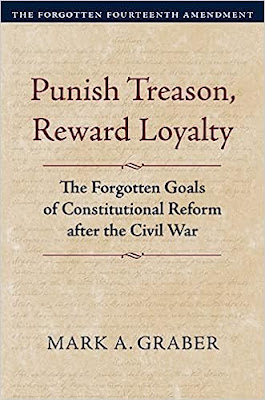
Mark A. Graber, Punish Treason, Reward Loyalty: The Forgotten Goals of Constitutional Reform after the Civil War (University of Kansas Press, 2023)
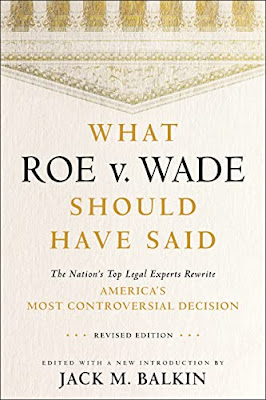
Jack M. Balkin, What Roe v. Wade Should Have Said: The Nation's Top Legal Experts Rewrite America's Most Controversial Decision - Revised Edition (NYU Press, 2023)

Andrew Koppelman, Burning Down the House: How Libertarian Philosophy Was Corrupted by Delusion and Greed (St. Martin’s Press, 2022)

Gerard N. Magliocca, Washington's Heir: The Life of Justice Bushrod Washington (Oxford University Press, 2022)
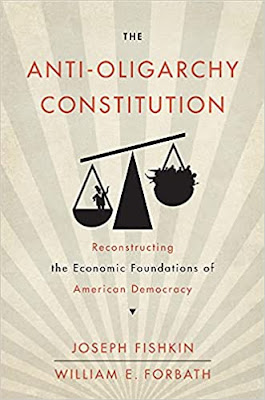
Joseph Fishkin and William E. Forbath, The Anti-Oligarchy Constitution: Reconstructing the Economic Foundations of American Democracy (Harvard University Press, 2022)
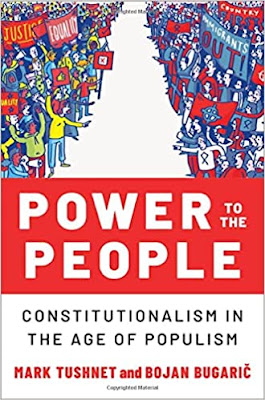
Mark Tushnet and Bojan Bugaric, Power to the People: Constitutionalism in the Age of Populism (Oxford University Press 2021).

Mark Philip Bradley and Mary L. Dudziak, eds., Making the Forever War: Marilyn B. Young on the Culture and Politics of American Militarism Culture and Politics in the Cold War and Beyond (University of Massachusetts Press, 2021).

Jack M. Balkin, What Obergefell v. Hodges Should Have Said: The Nation's Top Legal Experts Rewrite America's Same-Sex Marriage Decision (Yale University Press, 2020)

Frank Pasquale, New Laws of Robotics: Defending Human Expertise in the Age of AI (Belknap Press, 2020)

Jack M. Balkin, The Cycles of Constitutional Time (Oxford University Press, 2020)

Mark Tushnet, Taking Back the Constitution: Activist Judges and the Next Age of American Law (Yale University Press 2020).

Andrew Koppelman, Gay Rights vs. Religious Liberty?: The Unnecessary Conflict (Oxford University Press, 2020)

Ezekiel J Emanuel and Abbe R. Gluck, The Trillion Dollar Revolution: How the Affordable Care Act Transformed Politics, Law, and Health Care in America (PublicAffairs, 2020)

Linda C. McClain, Who's the Bigot?: Learning from Conflicts over Marriage and Civil Rights Law (Oxford University Press, 2020)
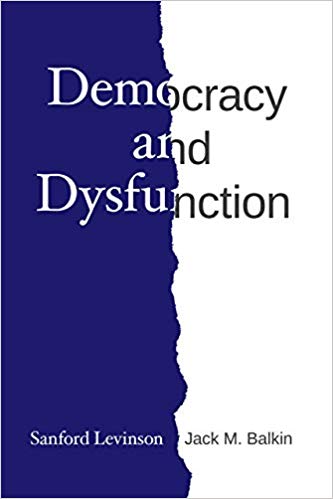
Sanford Levinson and Jack M. Balkin, Democracy and Dysfunction (University of Chicago Press, 2019)

Sanford Levinson, Written in Stone: Public Monuments in Changing Societies (Duke University Press 2018)

Mark A. Graber, Sanford Levinson, and Mark Tushnet, eds., Constitutional Democracy in Crisis? (Oxford University Press 2018)

Gerard Magliocca, The Heart of the Constitution: How the Bill of Rights became the Bill of Rights (Oxford University Press, 2018)

Cynthia Levinson and Sanford Levinson, Fault Lines in the Constitution: The Framers, Their Fights, and the Flaws that Affect Us Today (Peachtree Publishers, 2017)

Brian Z. Tamanaha, A Realistic Theory of Law (Cambridge University Press 2017)

Sanford Levinson, Nullification and Secession in Modern Constitutional Thought (University Press of Kansas 2016)

Sanford Levinson, An Argument Open to All: Reading The Federalist in the 21st Century (Yale University Press 2015)

Stephen M. Griffin, Broken Trust: Dysfunctional Government and Constitutional Reform (University Press of Kansas, 2015)

Frank Pasquale, The Black Box Society: The Secret Algorithms That Control Money and Information (Harvard University Press, 2015)

Bruce Ackerman, We the People, Volume 3: The Civil Rights Revolution (Harvard University Press, 2014)
Balkinization Symposium on We the People, Volume 3: The Civil Rights Revolution

Joseph Fishkin, Bottlenecks: A New Theory of Equal Opportunity (Oxford University Press, 2014)

Mark A. Graber, A New Introduction to American Constitutionalism (Oxford University Press, 2013)

John Mikhail, Elements of Moral Cognition: Rawls' Linguistic Analogy and the Cognitive Science of Moral and Legal Judgment (Cambridge University Press, 2013)

Gerard N. Magliocca, American Founding Son: John Bingham and the Invention of the Fourteenth Amendment (New York University Press, 2013)

Stephen M. Griffin, Long Wars and the Constitution (Harvard University Press, 2013)

Andrew Koppelman, The Tough Luck Constitution and the Assault on Health Care Reform (Oxford University Press, 2013)

James E. Fleming and Linda C. McClain, Ordered Liberty: Rights, Responsibilities, and Virtues (Harvard University Press, 2013)
Balkinization Symposium on Ordered Liberty: Rights, Responsibilities, and Virtues

Andrew Koppelman, Defending American Religious Neutrality (Harvard University Press, 2013)

Brian Z. Tamanaha, Failing Law Schools (University of Chicago Press, 2012)

Sanford Levinson, Framed: America's 51 Constitutions and the Crisis of Governance (Oxford University Press, 2012)

Linda C. McClain and Joanna L. Grossman, Gender Equality: Dimensions of Women's Equal Citizenship (Cambridge University Press, 2012)

Mary Dudziak, War Time: An Idea, Its History, Its Consequences (Oxford University Press, 2012)

Jack M. Balkin, Living Originalism (Harvard University Press, 2011)

Jason Mazzone, Copyfraud and Other Abuses of Intellectual Property Law (Stanford University Press, 2011)

Richard W. Garnett and Andrew Koppelman, First Amendment Stories, (Foundation Press 2011)

Jack M. Balkin, Constitutional Redemption: Political Faith in an Unjust World (Harvard University Press, 2011)

Gerard Magliocca, The Tragedy of William Jennings Bryan: Constitutional Law and the Politics of Backlash (Yale University Press, 2011)

Bernard Harcourt, The Illusion of Free Markets: Punishment and the Myth of Natural Order (Harvard University Press, 2010)

Bruce Ackerman, The Decline and Fall of the American Republic (Harvard University Press, 2010)
Balkinization Symposium on The Decline and Fall of the American Republic

Ian Ayres. Carrots and Sticks: Unlock the Power of Incentives to Get Things Done (Bantam Books, 2010)

Mark Tushnet, Why the Constitution Matters (Yale University Press 2010)
Ian Ayres and Barry Nalebuff: Lifecycle Investing: A New, Safe, and Audacious Way to Improve the Performance of Your Retirement Portfolio (Basic Books, 2010)
.jpg)
Jack M. Balkin, The Laws of Change: I Ching and the Philosophy of Life (2d Edition, Sybil Creek Press 2009)

Brian Z. Tamanaha, Beyond the Formalist-Realist Divide: The Role of Politics in Judging (Princeton University Press 2009)
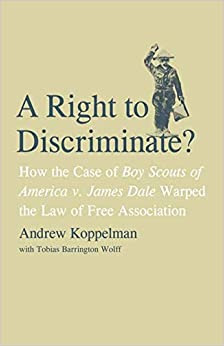
Andrew Koppelman and Tobias Barrington Wolff, A Right to Discriminate?: How the Case of Boy Scouts of America v. James Dale Warped the Law of Free Association (Yale University Press 2009)

Jack M. Balkin and Reva B. Siegel, The Constitution in 2020 (Oxford University Press 2009)
Heather K. Gerken, The Democracy Index: Why Our Election System Is Failing and How to Fix It (Princeton University Press 2009)

Mary Dudziak, Exporting American Dreams: Thurgood Marshall's African Journey (Oxford University Press 2008)

David Luban, Legal Ethics and Human Dignity (Cambridge Univ. Press 2007)

Ian Ayres, Super Crunchers: Why Thinking-By-Numbers is the New Way to be Smart (Bantam 2007)

Jack M. Balkin, James Grimmelmann, Eddan Katz, Nimrod Kozlovski, Shlomit Wagman and Tal Zarsky, eds., Cybercrime: Digital Cops in a Networked Environment (N.Y.U. Press 2007)

Jack M. Balkin and Beth Simone Noveck, The State of Play: Law, Games, and Virtual Worlds (N.Y.U. Press 2006)

Andrew Koppelman, Same Sex, Different States: When Same-Sex Marriages Cross State Lines (Yale University Press 2006)
Brian Tamanaha, Law as a Means to an End (Cambridge University Press 2006)
Sanford Levinson, Our Undemocratic Constitution (Oxford University Press 2006)
Mark Graber, Dred Scott and the Problem of Constitutional Evil (Cambridge University Press 2006)
Jack M. Balkin, ed., What Roe v. Wade Should Have Said (N.Y.U. Press 2005)
Sanford Levinson, ed., Torture: A Collection (Oxford University Press 2004)
Balkin.com homepage
Bibliography
Conlaw.net
Cultural Software
Writings
Opeds
The Information Society Project
BrownvBoard.com
Useful Links
Syllabi and Exams